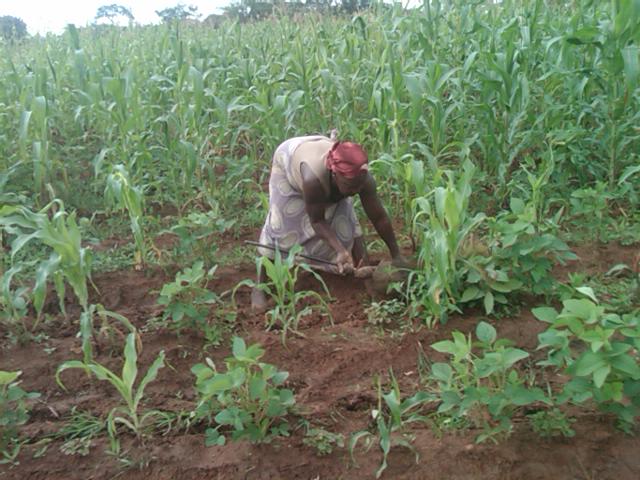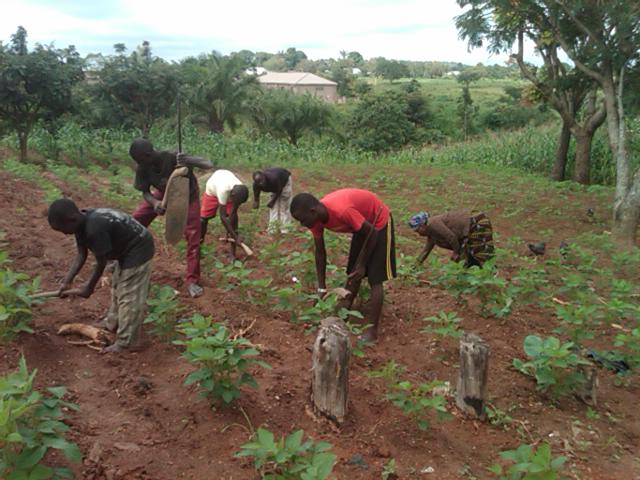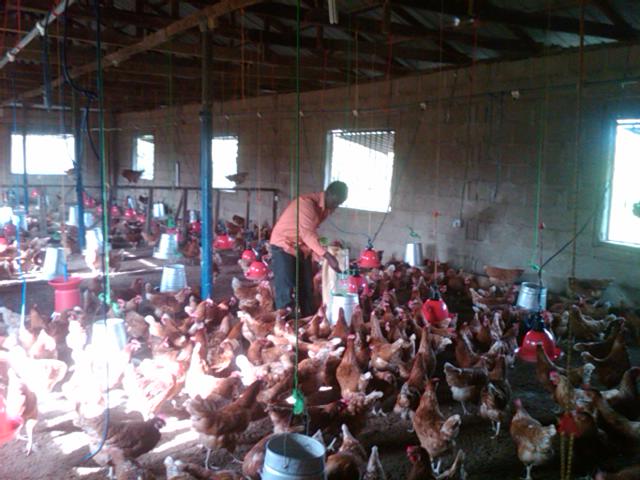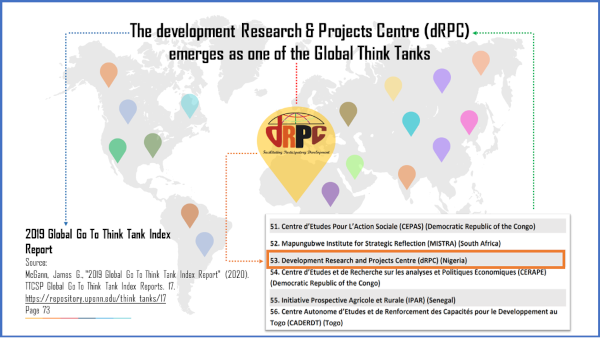Between 2015 to 2017, the dRPC carried out the project – Organizational Capacity Building for Farmer Associations Implementing Afforestation and Reforestation Interventions in Katsina state. This project was implemented with funding from OXFAM-NOVIB Netherlands and focused on strengthening the capacity of 50 small farmers associations including women’s cooperatives to increase knowledge of linkage between farming practices and climate change; and to strengthen their capacity to access micro, small and medium scale funding for subsistence farming. This project was designed in response to the weaknesses identified with the farmers associations’ following the formative scan of agriculture by the dRPC in Northwest Nigeria funded by OXFAM / NOVIB. Findings of the baseline survey were streamed into the project design. The dRPC’s work in the area of climate change started in 1996 with EU funding through ACORD to study the challenges to livelihood caused by the recession of lake Chad in Borno state. The dRPC produces periodic assessments and updates on climate change in Nigeria, the most recent is the update for Quarter 1, 2020 below:
Climate Change Update Q1. 2020
1) There is a lot going on to build climate adaptation and resilience in Nigeria. State governments in vulnerable geographies such as Delta, Enugu, and Lagos states have consisted Ministries of the Environment, they have developed state climate change adaptation plans and strategies and are implementing significant encouraging recycling and in the case of Lagos building the longest sea barrier wall in Africa, the Great Eko Wall to address severe coastal erosion.
2) At the national level, the Department of Climate Change under the Federal Ministry of Environment is implementing climate change programs which include, build capacity for climate change desk officers from states, environmental clean ups in the Shell exploration areas and the green bond initiative. The Dept also supports major donor funded programs on climate change.
3) To date major donor funded programs on climate change include –
The EU funded Nigerian Climate Change Response Program (NCCRP) which aims to guarantee country’s economic growth and development strategies while meeting its conditional 45% NDC targets by 2030. The specific objective is to contribute to the creation of Nigeria’s GHG emission profile with the aim of pinpointing mitigation actions reducing energy use and costs in favor of renewable energy and energy efficiency solutions. This will be mainly achieved through the creation of sectoral MRVs (e.g. for energy and waste sectors) and a waste baseline.
The Norwegian million naira funding to FAO to fabricate and distribute fuel efficient stoves in the Northeast.
World Bank US$4.94 M Programme on Reducing Emission from Deforestation and Degraded Forests (REDD+)
The Canadian (Global Affairs) NATIONAL ADAPTATION STRATEGY AND PLAN OF ACTION ON CLIMATE CHANGE FOR NIGERIA (NASPA-CCN)
4) As important as these initiatives have been there are obvious gaps in the climate change landscape of Nigeria. What are these gaps?
a) Only the REDD has an integrated civil society engagement strategy; all other interventions are not grassroots driven but are mainly linked-into the negative fall-out from the energy sector focusing on carbon emission reduction.
b) There are no public education climate change programs in Nigeria. Neither at state or national level. There are no programs to educate the public and encourage behavioral change particularly with regard to single use plastic pollution.
c) There is NO regulatory framework in place to guide industry and the manufacturing sector in particular regarding the sale of consumables in single use plastic; recycling plans; incentives towards customer recycling; or disposal of waste.
d) There is NO regulatory framework regarding hazardous waste, including bio-waste from hospitals; and the electronic industry waste which the Chinese have dominated by importing used computers for harvesting of metal
e) There is NO regulatory framework regarding legal and illegal mining which has been poisoning water sources across the Northcentral and Northwest of Nigeria.
5) There is also an interesting phenomena taking place in Nigeria. It is the complete delinking in Nigeria of major crises of the day from climate change and the politicization of such crises. Let me explain – the major crises of the day Nigeria is facing are – the Boko Harm insurgency; conflict between farmers and nomadic cattle rearers; cattle rustling, kidnapping and banditry in rural areas particularly along major trunk routes in the Northwest; flooding; displacement; and sub-optimal performance of the agricultural sector. All these problems are linked to climate change, yet there is no joined up strategy to incorporate climate change perspectives into framing or addressing these problems. Climate change and environmental issues are vertical and specific to energy sector mainly; they are not integrated into government programming and planning. There is no climate change desk in the Ministries of Planning and the approach to disaster relief is bereft of any climate change perspectives.
6) While there are NGOs working in this space, they are few, fledgling, have limited support and to a large extent are working covertly for fear of a backlash or targeting from industry. For the NGOs engaged in creating value from recycling they are less cautious and in many cases these NGOs have been incorporated into government’s youth employment programs. For the NGOs engaged in challenging industry taking a watchdog/human rights approach they are virtually working as underground action groups for fear of backlash. In most cases they are not registered and their office addresses are not stated on their websites https://esupnow.org/.
Recommendations on strategic investments for Open Society in the Nigerian climate change space?
Given the government focus of development partners in climate change programming, there is tremendous opportunity for value for money investments in the civil society domain related to climate change. But in what area of civil society programming? The gap that exist currently is one of poor capacity of CSOs for advocacy to government at national and state levels. CSOs have been great at running their own waste to wealth projects and in challenging industry BUT they have not fashioned out clear advocacy messages and strategies with well-framed advocacy demands for government to put climate change on the policy priority agenda.
The climate change advocacy function is not one for climate change NGOs only, it is one for peace and conflict mitigation NGOs; for associations of farmers and herdsmen; it is one for associations of host communities supporting displaced people; it is also an agenda for labor unions; CSO networks in conflict zones; and women’s and youth groups.
Building capacity for climate change advocacy in the Nigerian CSO space requires the following strategies –
- Leadership development training for governance and executive of the NGOs
- Organizational effectiveness support to incorporate climate change agenda into existing business plans; action plans; and organizational strategic plans
- Technical Capacity building support to build climate change literacy; build the evidence base; frame advocacy demands; identify advocacy targets; pitch the advocacy message; monitor, evaluate and disseminate impact to a learning community
- A media strategy to build capacity for conflict analysis among editors, conflict beat writers and social media influencers
- Seed support for a selection on NGOs to establish demonstration projects for replication and scale up by government
- Global networking to support Nigerian CSOs to engage, share experiences and participate in the global space
For capacity of CSOs in the climate change advocacy CSO space to be successful, there must also be a complementary focus on government. Without readiness of government to accept advocacy demands and to partner with CSOs the climate change agenda is unlikely to be successful. What does this look like? Two strategies are proposed:
1) Leadership development for climate change program targeted at the decision making level (Directors and above) in strategic line Ministries such as agriculture; security and internal affairs; women’s affairs; manufacturing; industry; communication and of course the Ministry of Environment where such Ministries exist at state level.
2) For value for money and for government buy-in this leadership development program should be designed as an in-country certified program by a government agency of high standing. For example the National Institute for Policy and Strategic Studies (NIPSS) the apex government think tank and public service training agency supervised directly by the Office of the President. While there are staff with climate change capacity at NIPSS it will be necessary to conduct a master training session with the faculty of the institute prior to rolling out the customized leadership development training.








